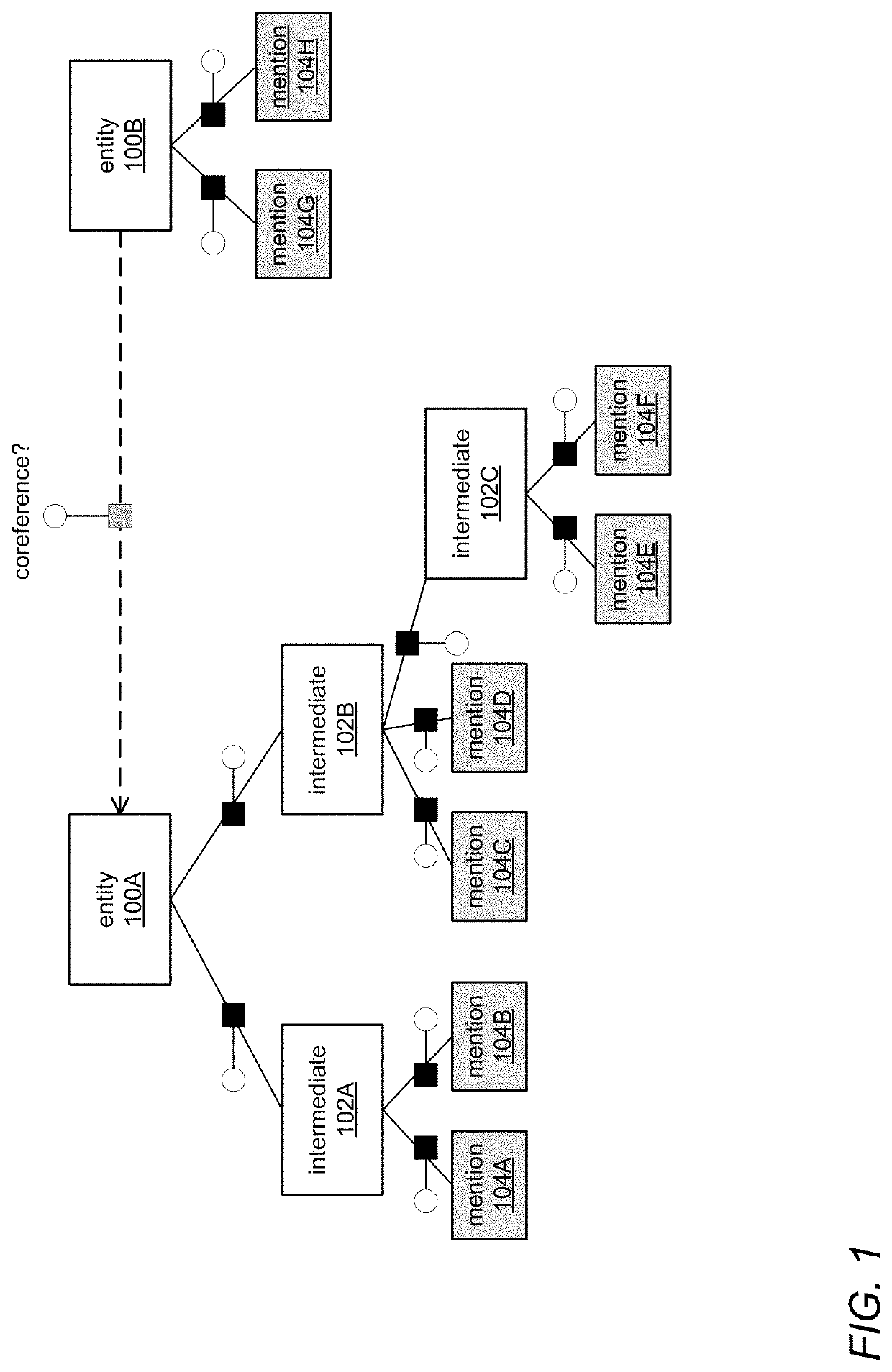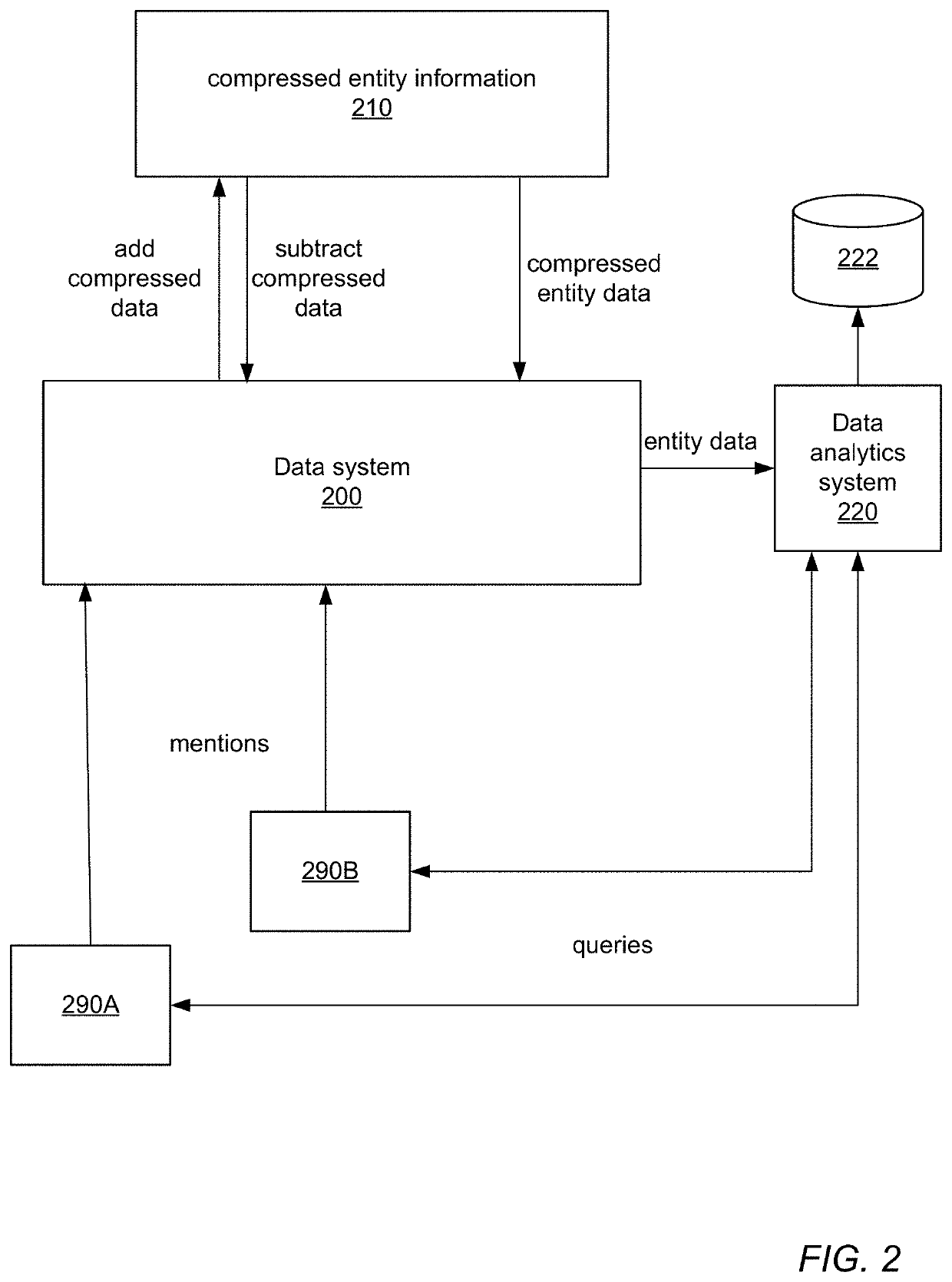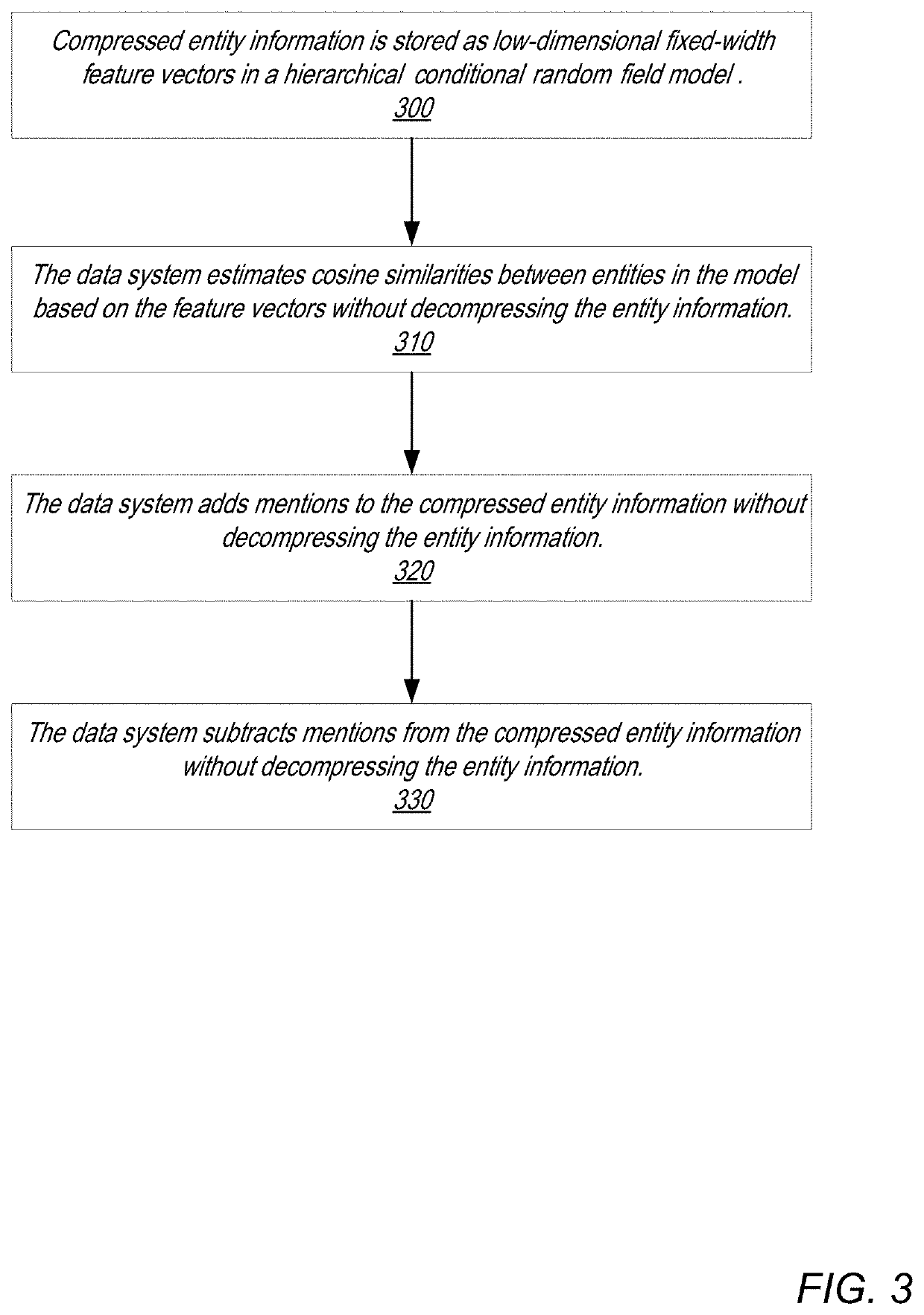Systems and methods for scalable hierarchical coreference
a hierarchical coreference and hierarchical coreference technology, applied in the field of locality sensitive hashing (lsh) algorithms, can solve the problems of high-dimensional and dynamic, high-dimensional similarity operations can be computationally expensive, and the sparse representation of underlying feature representations in the inner-loop of probabilistic inference is expensive, so as to preserve the algorithm's ability to estimate cosine similarity without degrading its statistical performance or sacrificing quality
- Summary
- Abstract
- Description
- Claims
- Application Information
AI Technical Summary
Benefits of technology
Problems solved by technology
Method used
Image
Examples
experiment 1
[0080]In this experiment, models are compared with a SimHash representation of the features and statistics directly to an exact representation.
[0081]First, SimHash models are compared to the exact model during the course of MCMC inference to see how the models evaluate the various intermediate results of inference. In particular, MCMC is run for 100,000 steps to optimize SimHash-based models on the REXA test set (with 32, 64, 128, and 256 bits). FIGS. 4A through 4D show model score comparisons with homomorphic SimHash and exact sparse-vector representations for 32, 64, 128, and 256 bits, respectively. The chain begins with the singleton configuration (all mentions in their own entity tree of size one), proposing changes to the state at each time-step that the model decides to accept or reject, and gradually produces larger and larger trees as it infers the entities. For each proposed state change (sample), the log model ratio of both the SimHash model and the exact model are recorde...
PUM
 Login to View More
Login to View More Abstract
Description
Claims
Application Information
 Login to View More
Login to View More - R&D
- Intellectual Property
- Life Sciences
- Materials
- Tech Scout
- Unparalleled Data Quality
- Higher Quality Content
- 60% Fewer Hallucinations
Browse by: Latest US Patents, China's latest patents, Technical Efficacy Thesaurus, Application Domain, Technology Topic, Popular Technical Reports.
© 2025 PatSnap. All rights reserved.Legal|Privacy policy|Modern Slavery Act Transparency Statement|Sitemap|About US| Contact US: help@patsnap.com



